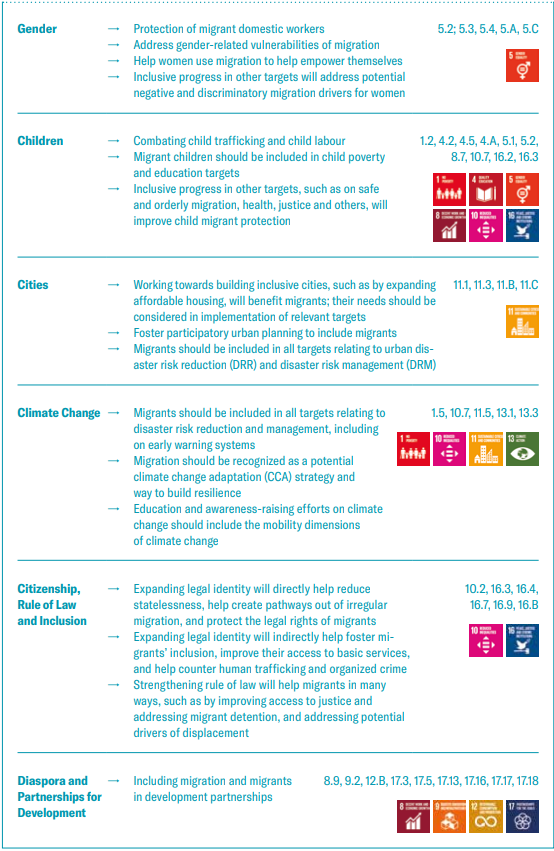The New York Declaration for Refugees and Migrants was adopted by the United Nations General Assembly in September 2016. It affirms the commitment of States to respond to and address concerns relating to the movement of large numbers of refugees and migrants. The Declaration acknowledges that States have a shared responsibility to manage the movements of large numbers of refugees and migrants in a “humane, sensitive, compassionate and people-centred manner” and to provide them with “comprehensive policy support, assistance and protection, consistent with States’ obligations under international law” (UNGA, 2016a: 2–3).
The Declaration sets out commitments that apply to refugees and migrants collectively. These include providing humanitarian support, facilitating access to health care and education, promoting collaboration between States to respond collectively to the situation of refugees and migrants globally, and strengthening the capacity of States to respond in these ways. As well, recognizing the different drivers of migration, the declaration also sets out some commitments that apply separately to refugees, and others that apply only to migrants. Furthermore, the Declaration called for a Comprehensive Refugee Response Framework (subsequently called the Global Compact on Refugees) and a Global Compact for Safe, Orderly and Regular Migration.
The New York Declaration for Refugees and Migrants and the Global Compact for Safe, Orderly and Regular Migration are important commitments that facilitate international cooperation on migration. They have advanced such cooperation by helping States reach shared ideas of how to govern and manage migration in a manner which protects human lives and makes migration beneficial for all. They have addressed a wide range of migration-related issues, involving many stakeholders, and putting in place new institutional arrangements to help States work together on migration management.




